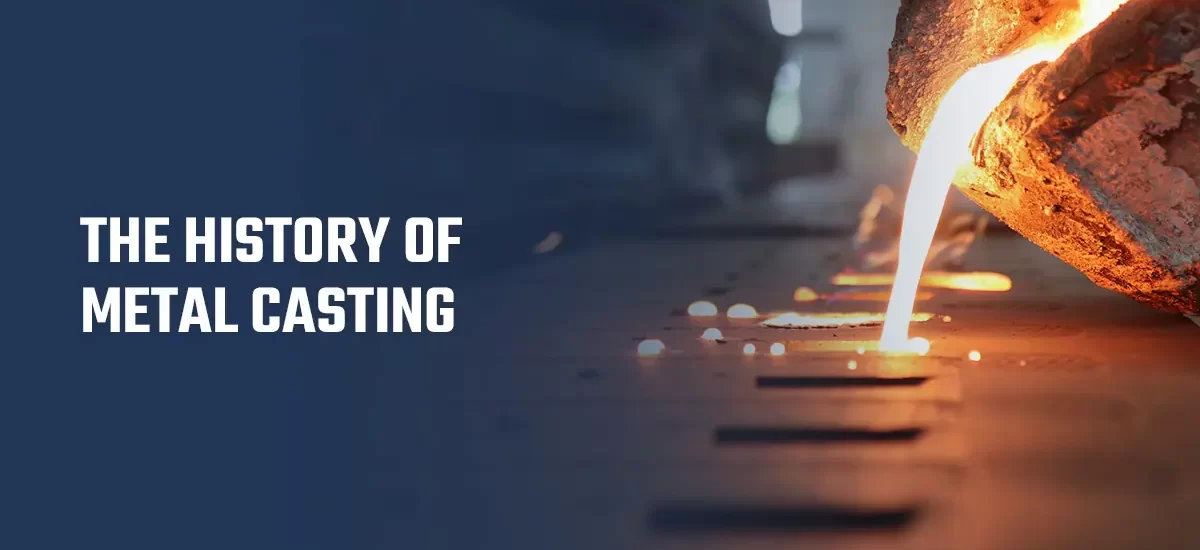Metal casting can be traced as far back as the Bronze Age, when humans first began creating tools from metals rather than stone. Over the years, it’s turned into an intricate metalworking technique with many different applications. Read on to learn about the rich history of foundries and the people who were key to developing metal casting processes.

METAL CASTING THROUGH THE AGES
Since its humble beginnings in prehistory, metal casting has come a long way. It brought humanity out of the Stone Age and enabled the rise of some of the great ancient civilizations. And it’s still used today to make parts and components for many industries, such as automotive manufacturing. Let’s start from the beginning.
WHERE DID METAL CASTING COME FROM?
The earliest metal castings were made with gold and copper — because these metals were very malleable, they were easy to melt and cast. Bronze soon replaced them, however, due to its rigidity and strength. The earliest bronze castings were made using open stone molds. This method resulted in objects that had one flat side, which limited casters’ creativity. Using the lost wax process, which dates back to 3,000 B.C., casters created plaster molds from wax models. The lost wax technique enabled them to create more intricate shapes such as decorative statues and figurines. Metal casting was also developing quickly in ancient China. During the Shang Dynasty, Chinese metal casters used an innovative technique for metal casting. They combined compressed sand with clay to make molds, making them the first to use sand casting in history. Later, around 500 B.C., Zhou Dynasty casters invented cast iron, which was used mostly for farming applications. This iron was known as pig iron and was very brittle, making it unsuitable for many items.

